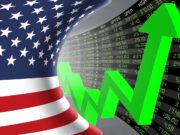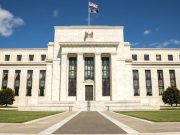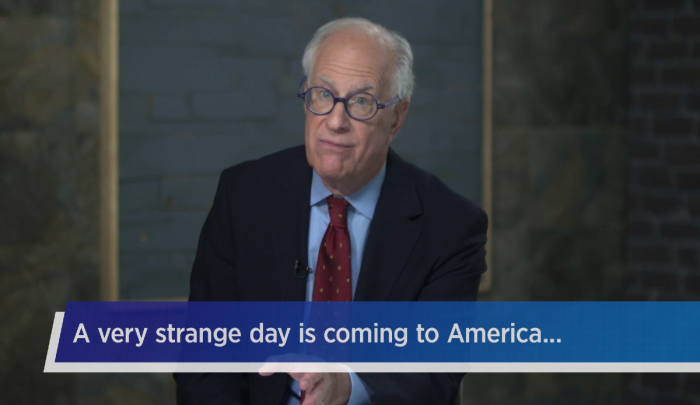Stocks plunged last week in a continuation of 2022’s volatile start. The market notched a third consecutive week of declines, with the major indices posting the sharpest weekly losses since March 2020. The Dow fell 4.6%, the S&P 500 dropped 5.7%, and the Nasdaq sank into correction territory with a weekly loss of 8.1%. Declines were fueled by concerns over a potentially more aggressive Fed amid unrelenting inflationary pressures.
All eyes will be on the Federal Reserve this week in anticipation of the results from the first FOMC meeting of the year. The Fed’s first meeting for 2022 begins on Tuesday with minutes scheduled for release on Wednesday along with Chair Powell’s statement to the press.
This week will be jam-packed with quarterly and year-end results from some of the world’s most valuable companies like Tesla (TSLA), J&J (JNJ), Apple (AAPL), and Microsoft (MSFT). Market watchers will also gain insight into holiday spending with key data on December’s retail sales and consumption expected.
More volatility could be in the wings for the week to come, and our team has recommendations for a few tickers to watch as it all unfolds. This week we’re highlighting one name that bargain hunters will appreciate. We’ve also got the lowdown on one trading strategy for active investors who are short-term bearish on tech that can generate substantial rewards over a short time frame.
Bearish investors may want to go near-term short on the Nasdaq- 100 Index, given the sluggish backdrop for high-priced tech stocks. The ProShares Short QQQ (PSQ) fund is the tool that many of the pros on Wall Street use for doing just that. However, you don’t need to be a professional to employ this tactic.
PSQ offers inverse exposure to an index comprised of the 100 largest nonfinancial securities on the NASDAQ, making it a potentially attractive option for investors looking to bet against this sector of the U.S. economy.
It’s important to note that PSQ is designed to deliver inverse results over a single trading session, with exposure resetting every month. Investors considering this ETF should understand how that nuance impacts the risk/return profile and realize the potential for “return erosion” in volatile markets. PSQ should definitely not be found in a long-term, buy-and-hold portfolio but may be a useful tool for more active investors looking to either hedge existing exposure or bet on a decline in the top nonfinancial NASDAQ securities.
ProShares Short QQQ (PSQ) Data Summary
- Net Assets 576.04M
- Expense Ratio 0.95%
- Average Daily Volume $60.72M
Next up on our list is CVS Health Corporation (CVS). The pharmacy innovation company recently outlined its long-term growth strategy at its 2021 Investor Day, aiming at capitalizing on the significant market opportunity to make healthcare more convenient, personalized, and affordable for consumers. The company will optimize the retail portfolio to serve as community health destinations by closing nearly 900 stores over the next three years to reduce store density and ensure it has the right kinds of stores in the right locations for consumers and the business.
Moreover, CVS Health is driving a digital-first, technology-forward approach that will expand its reach and engagement with its more than 35 million online members. The company will also enhance omnichannel health services to meet the needs of consumers as and when required.
For 2021, the company projects total revenues of at least $290.30 billion. The company’s adjusted earnings per share (EPS) is expected to be at least $8.00. Cash flow from operations is expected to be at least $13.50 billion. CVS Health also presented a long-term outlook and growth targets. As part of its long-term growth trajectory, the company targets a return to low double-digit adjusted EPS growth in 2024 and beyond.
Goldman Sachs analyst Nathan Rich recently initiated coverage of CVS with a Buy rating and $121 price target. The analyst started the U.S. Managed Care sector with a positive outlook and sees potential for 13% annual earnings growth for the large-cap names over the next two years. He sees “under-appreciated optionality” in CVS’s new provider-focused strategy, with leverage to the value-based care theme and “strong” underlying fundamentals.
With Q4 and year-end results in the wings for February 9th, analyst enthusiasm is growing. Over the past 30 days, the analyst rating for CVS has increased 9%. The 29 analysts offering recommendations for the stock give it a Buy rating, with 21 analysts calling the stock a Buy and 8 calling it a Hold. There are no Sell ratings for CVS. A median 12-month price target of $115 represents a 13% increase from the last price. The stock also sports a 2.17% annual dividend yield.
Last up is a healthcare REIT that has maintained strength through the worst of the pandemic and is looking toward expansion which could mean significant rewards for investors in the years to come.
Investing in a hospital REIT or nursing home REITs could add stability to a portfolio over the long term. Because real estate is an asset class that’s not directly tied to traditional markets, REITs can bolster your portfolio when markets take a plunge.
“Health care REITs provide investors with a useful diversification tool with a robust long-term performance that will typically reduce the volatility of a portfolio because of how much returns differ from those of the S&P 500,” says Andrew Latham, managing editor of SuperMoney.
Healthpeak Properties (PEAK) owns 633 properties, balanced across the life sciences, senior housing, and medical office sectors. The life sciences portfolio consists of lab and office space focusing on three leading medical research markets (San Francisco, San Diego, and Boston), with properties typically located in business park or campus settings. Medical office properties are located adjacent to hospitals and leased to hospitals or physician groups.
Income from senior housing properties declined in 2021 due to pandemic effects but was offset by strength in the life sciences and medical office portfolios. The company has better-than-average liquidity to ride out further COVID-related disruptions. Total liquidity is $2.6 billion, including $2.4 billion available on its $2.5 billion revolving credit facility, as well as $150 million in cash and cash equivalents and no material debt maturities before 2023.
Longer-term, this high-yield REIT should benefit from demographic trends that include aging baby boomers demanding new treatments and medical devices, increased outpatient services, and more seniors requiring daily living assistance. In addition, the company boasts a $1.2 billion development pipeline that is already 63% pre-leased.
Healthpeak cut its dividend in 2017 after spinning off its nursing home business, marking the REIT’s only dividend cut in 25 years. Since then, the company has paid a steady $1.48 annual dividend. The payout ratio rose to about 90% in 2020 because of COVID, but it has averaged a safe sub-80% over the past four years. The current 82% payout ratio is comfortable enough to suggest that PEAK’s 3.32% dividend yield isn’t going anywhere anytime soon.
Should you invest in CVS right now?
Before you consider buying CVS, you'll want to see this.
Investing legend, Keith Kohl just revealed his #1 stock for 2022...
And it's not CVS.
Jeff Bezos, Peter Thiel, and the Rockefellers are betting a colossal nine figures on this tiny company that trades publicly for $5.
Keith say’s he thinks investors will be able to turn a small $50 stake into $150,000.
Find that to be extraordinary?
Click here to watch his presentation, and decide for yourself...
But you have to act now, because a catalyst coming in a few weeks is set to take this company mainstream... And by then, it could be too late.
Click here to find out the name and ticker of Keith's #1 pick...











